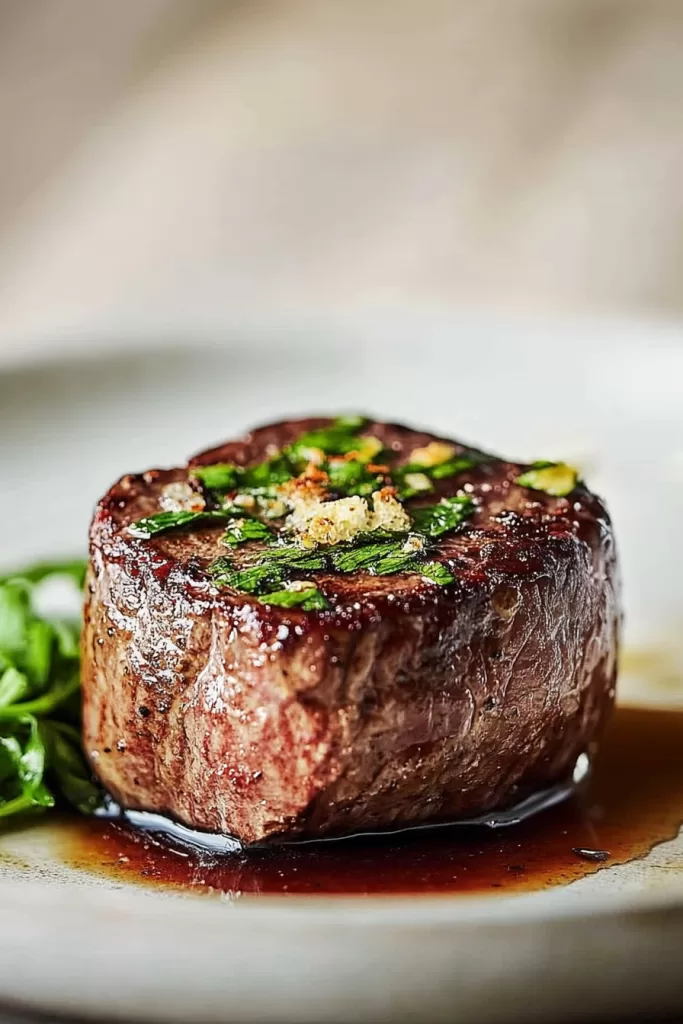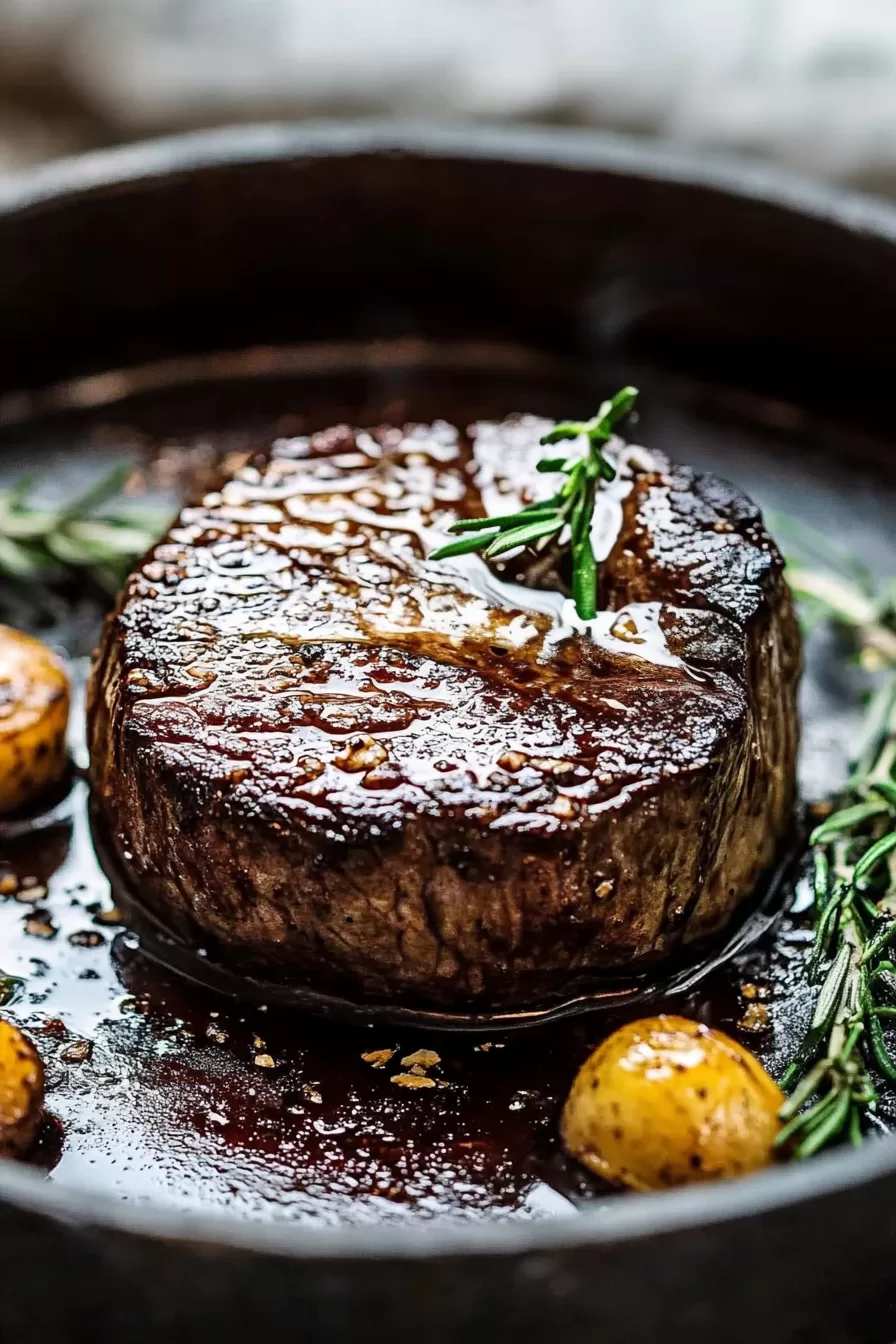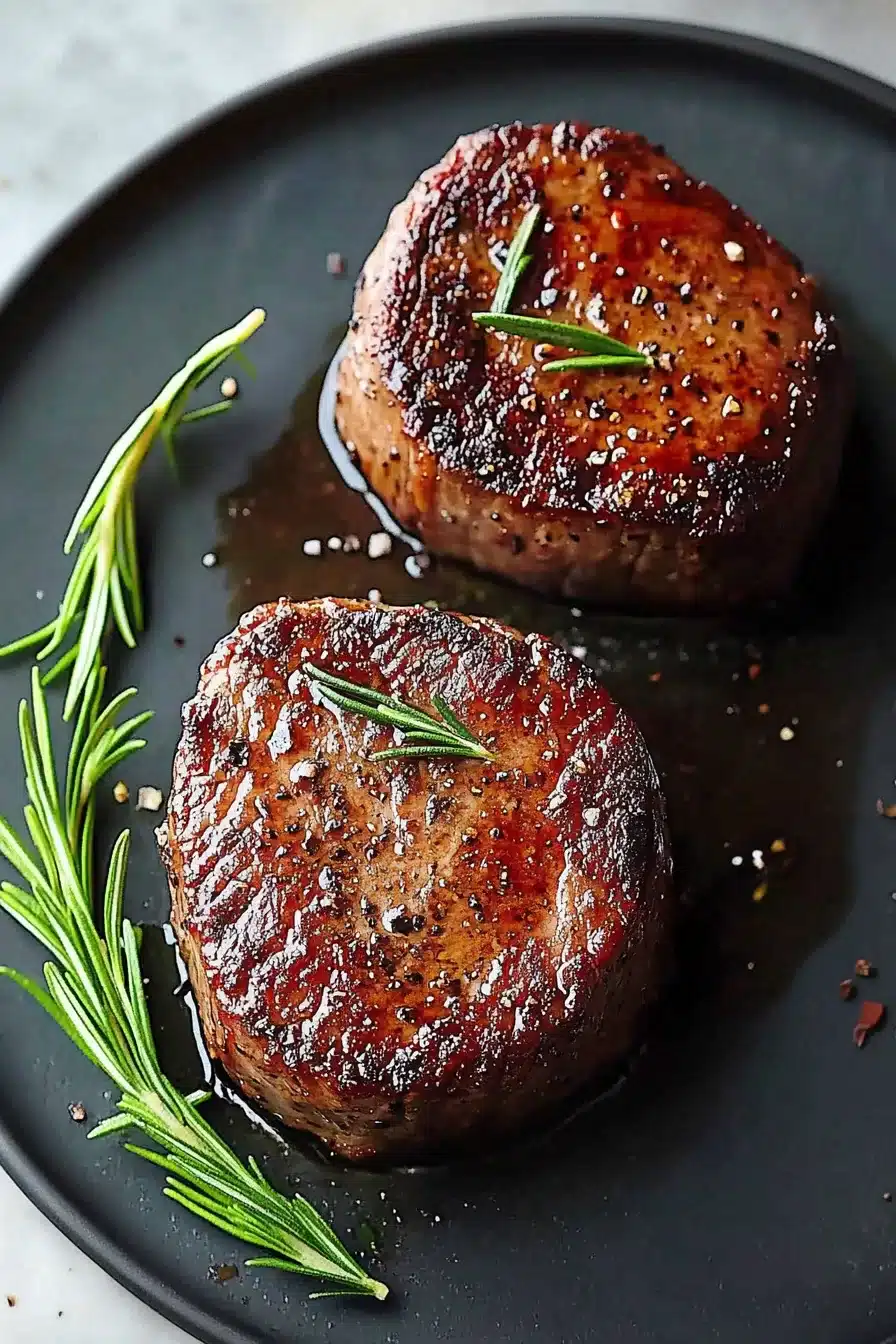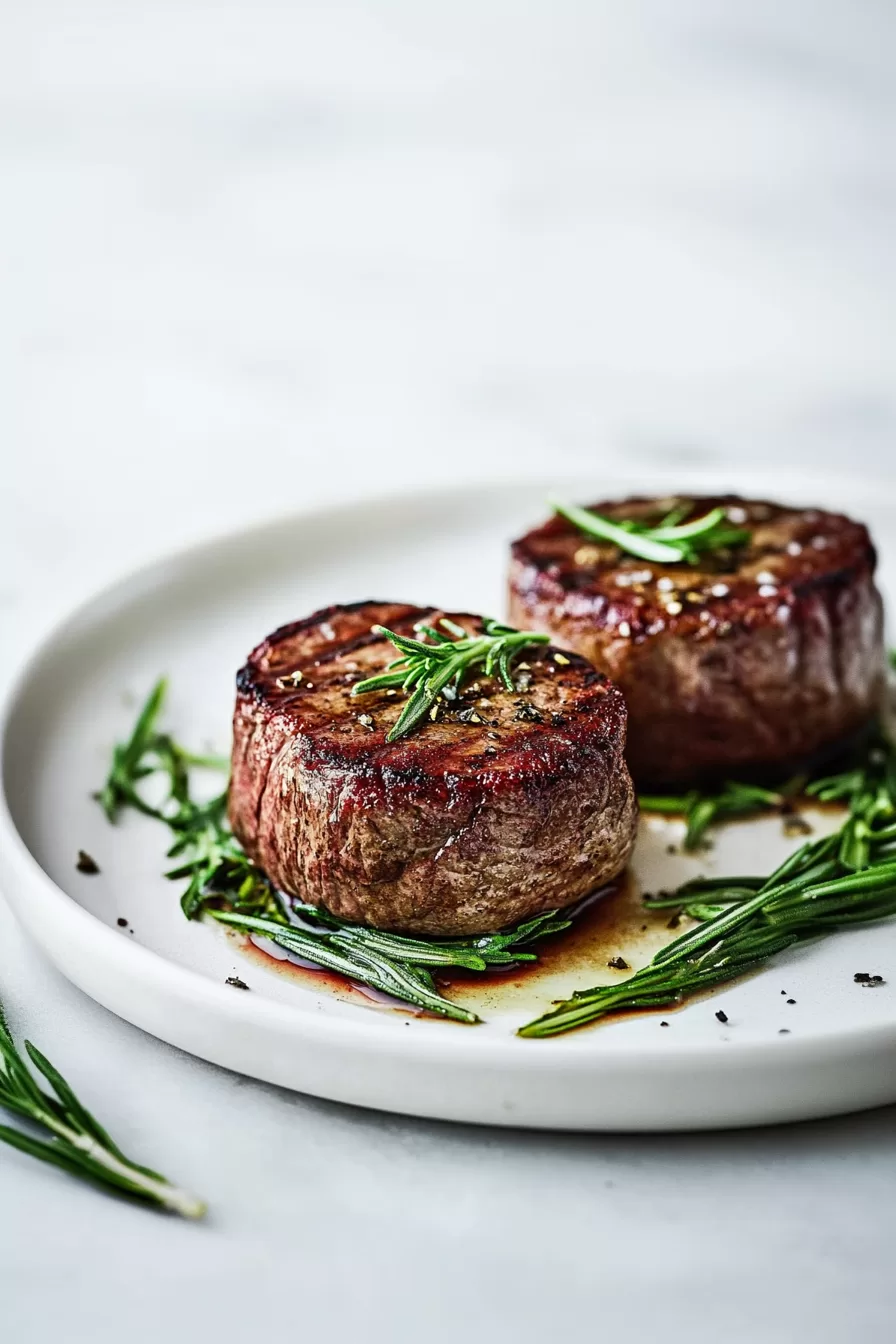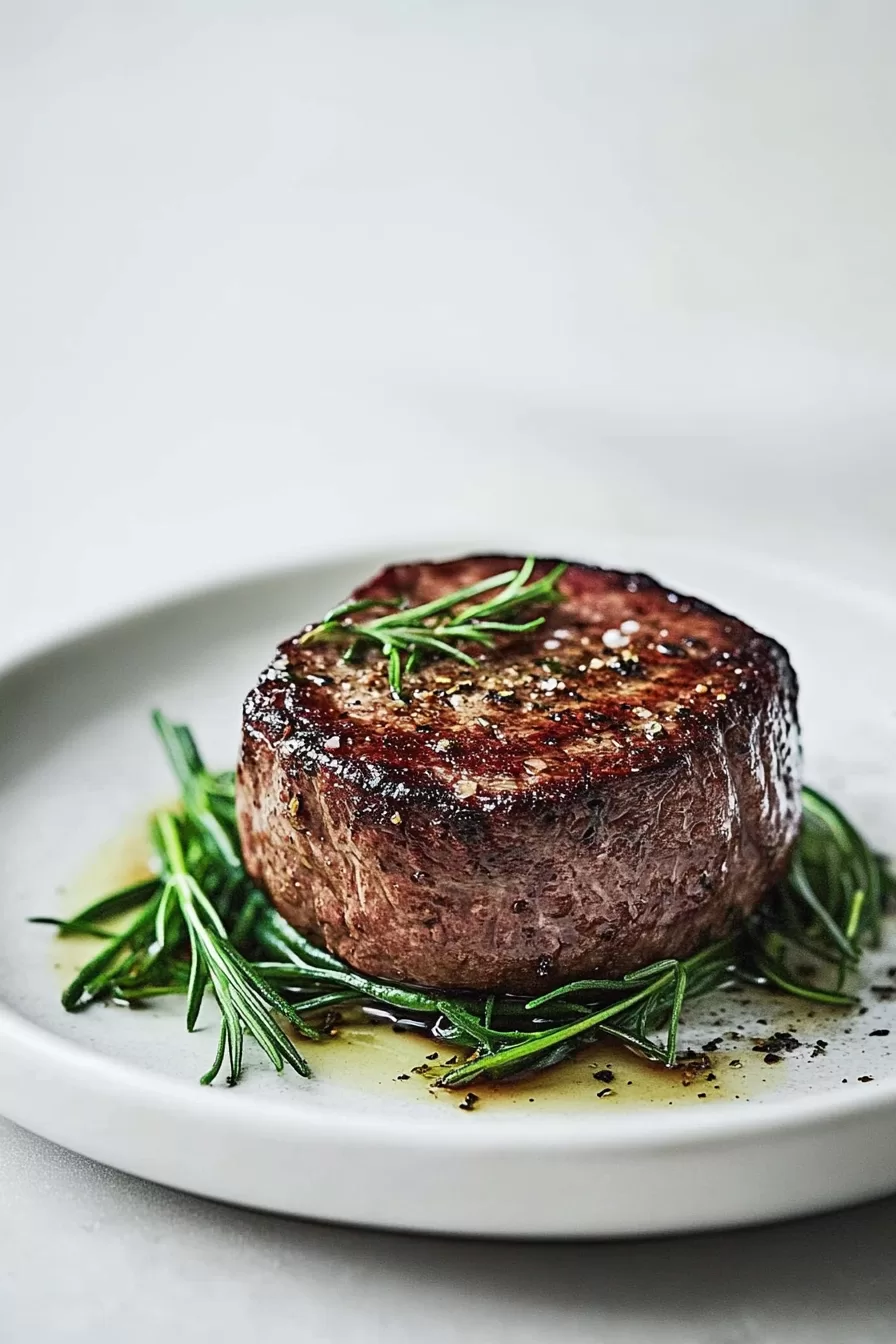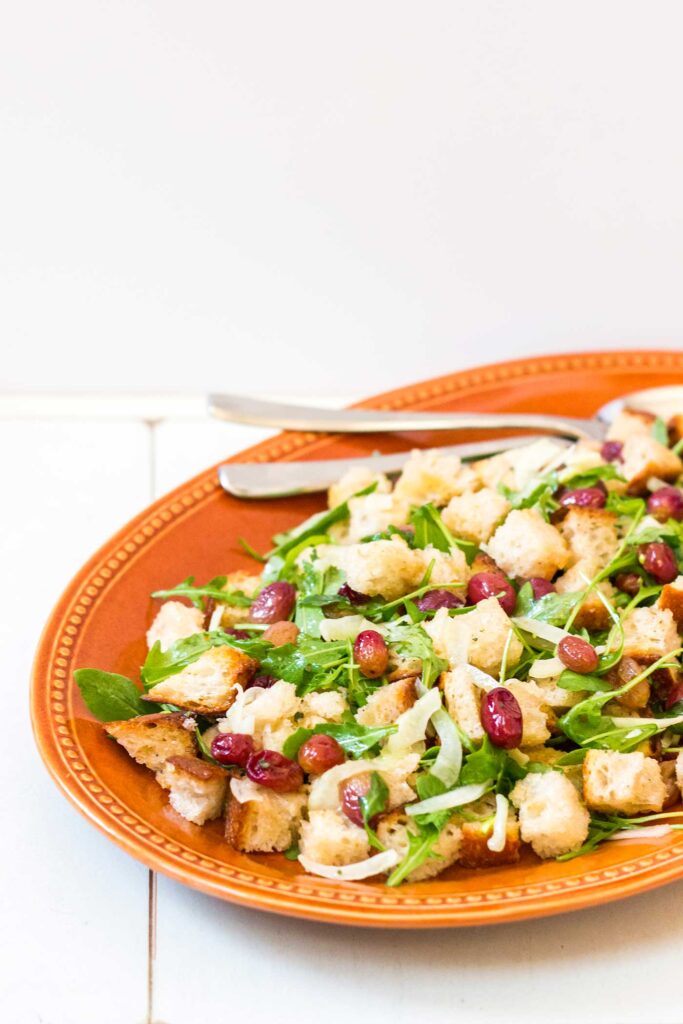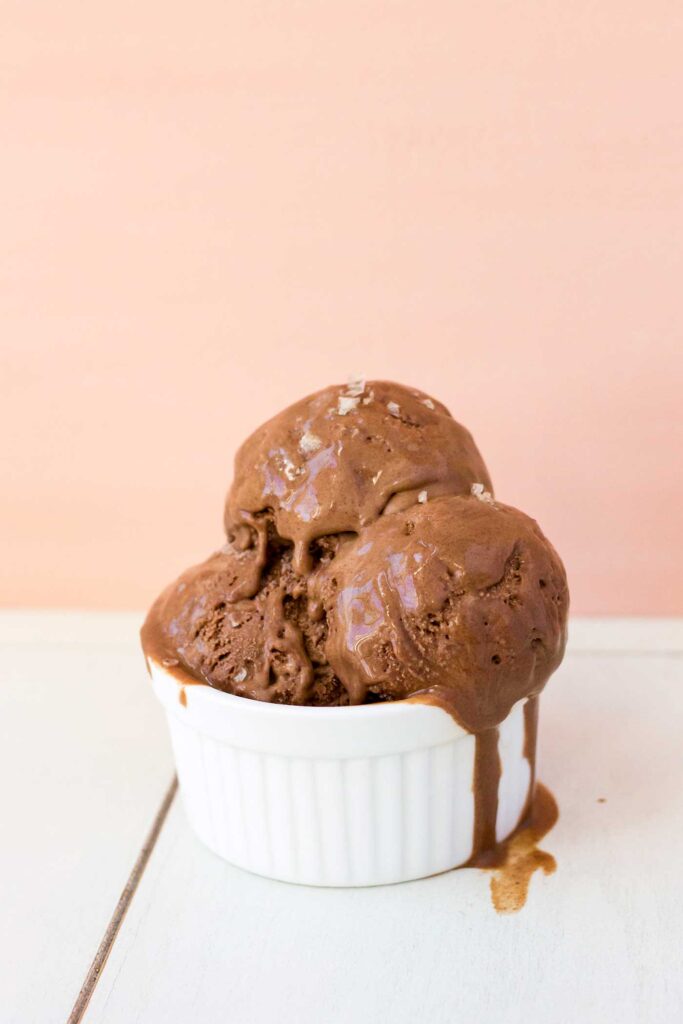
Lean in close. We’re talking about juicy, blistered-on-the-outside, buttery-on-the-inside filet mignon steaks, seared in hot oil with garlic and fresh herbs. Just a few ingredients—steak, garlic, thyme, butter—but the smell? Oh, it’ll wander through your kitchen like it owns the place.
You’re minutes away from racking up a restaurant-worthy dish in your cozy kitchen pajamas (or hey, real clothes, you fancy thing). This isn’t fussy. In fact, it’s almost suspiciously easy.
Some nights just call for fancy meat with a side of minimal effort. This filet mignon recipe has that crispy-seared edge, a blushing pink center, and a built-in butter bath that’ll have you questioning why you don’t do this every Tuesday. You sear, you baste, you roast, you bite. It’s over before the wine bottle’s gone, so maybe pour two glasses. I like this for at-home date nights or level-up solo dinners where you’re the real VIP (don’t @ me).
Table of Contents

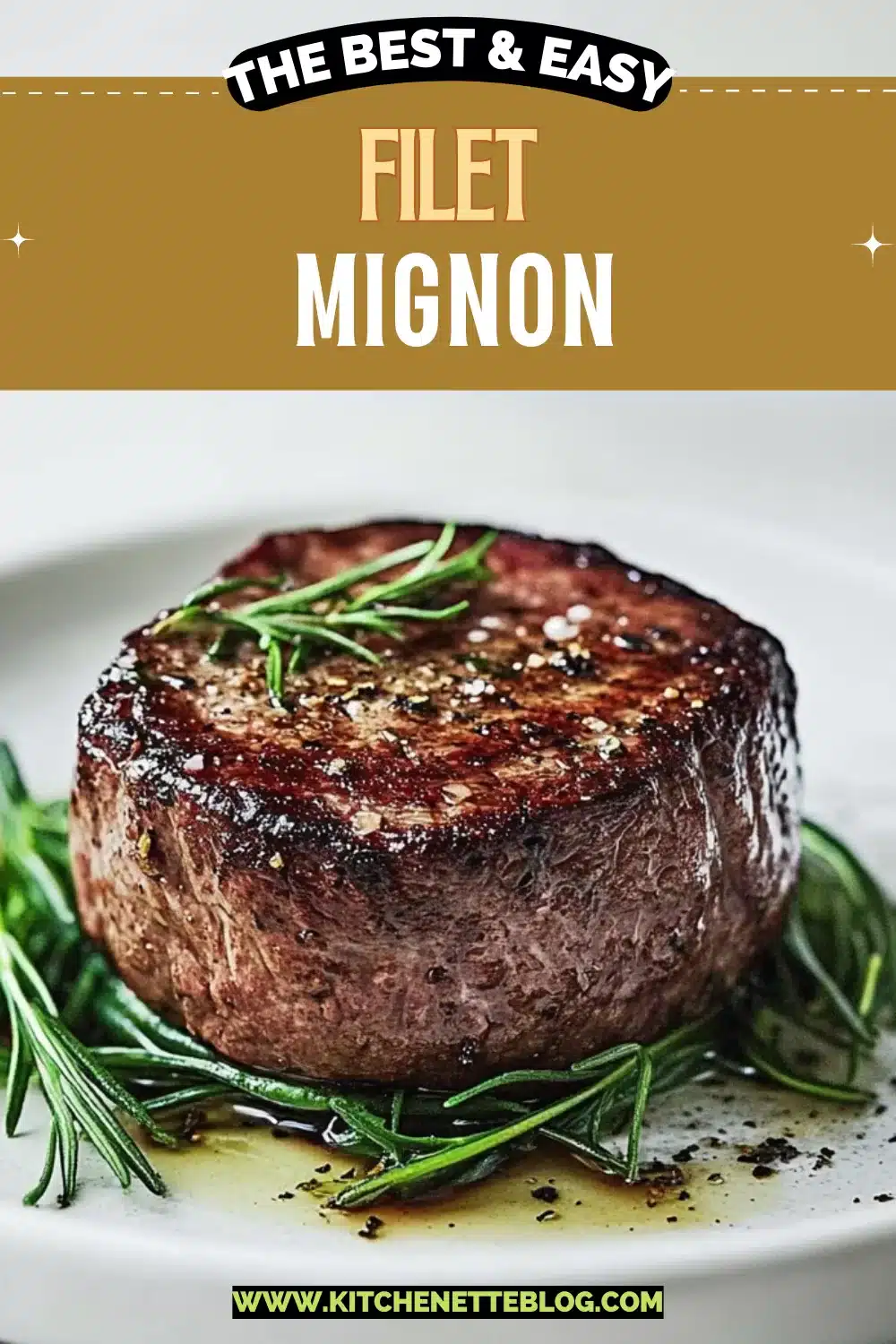

Don’t let this one slip away — pin it now and thank yourself later!
Don’t let this one slip away — pin it now and thank yourself later!
Why You’ll Love this Filet Mignon
There’s no over-the-top pitch here. Just a really excellent piece of meat, treated right with heat and butter.
- Ridiculously simple to make: You just sear, flip, baste, and roast—it’s barely more effort than a grilled cheese.
- Juicy, tender middle every time: The steak basically cuts itself. Alright, not literally, but it’s that buttery soft.
- Big flavor with minimal ingredients: Salt, pepper, garlic, and herbs. That’s it. No truffle foam or unicorn-infused marinades.
- Works for any occasion: Date night? Weeknight? Celebratory Tuesday? You’re good.
- It smells like victory: As soon as the butter hits the hot pan and picks up those garlicky-herby notes, your kitchen becomes a five-star steakhouse.
Ingredient Notes
Not a ton of ingredients here, but each one deserves its little moment in the spotlight.
- Filet mignon steaks: Try to get ones that are 1½ to 2 inches thick for best results. Thinner steaks will cook too fast (and not in a good way).
- Vegetable oil: It handles high heat better than olive oil, giving the steak that lovely crust without smoking up the place.
- Unsalted butter: Adds that velvety richness when you baste. Bonus: lets you better control the salt content.
- Garlic cloves: Smash ’em, don’t chop ’em. They lightly perfume the butter without overwhelming it.
- Fresh thyme or rosemary: Either works! Toss in whole sprigs so the oils release without having tiny herb bits burning.
- Salt and pepper: Be generous. This is steak, not steamed broccoli. Press the seasoning right on there like you mean it.
How To Make This Filet Mignon
Let’s cook this thing together. You’ll want a hot pan and a glass of something nearby (for hydration or celebration, your call).
-
Preheat the oven: Simple but important. You want it at 400°F and ready to go while you sear. That way, the steaks don’t sit around losing momentum.
-
Season your steaks: Just salt and pepper, but don’t half-heartedly sprinkle. Press that seasoning into the meat so it really sticks.
-
Sear in hot oil: Heat your cast-iron skillet over medium-high until it’s seriously hot. Add the oil, swirl to coat, and lay the steaks in carefully (tongs help, fingers don’t). Leave them alone for a solid 2 to 3 minutes to develop that golden crust.
-
Flip and butter-bathe: Once they’ve got a good sear, flip, drop in the butter, smashed garlic, and herb sprigs. Tilt the pan a bit and spoon that hot, fragrant butter over the steaks over and over. It’s a little hypnotic, in the best way.
-
Roast to finish: Into the oven they go—in the same skillet—for about 3 to 5 minutes. Use an instant-read thermometer to check. Pull them out at 120°F for rare, 130°F for medium-rare, or 140°F for medium. (Guessing is for lotto tickets, not filet.)
-
Let it rest: Move the steaks to a plate, give them a foil tent, and ignore them for 5 to 7 minutes. This step matters. Let the juices chill their way back into the meat.
-
Serve it up: Garlic butter. Steak sauce. Glistening. If you’re into fancy pairings, something like this pomegranate reduction would be wild alongside.
Storage Options
Let’s say (miraculously) you didn’t demolish both steaks in one sitting. Filet mignon saves surprisingly well if you know what you’re doing.
Pop any leftovers into an airtight container once they’re fully cooled. They’ll keep in the fridge for up to 3 days and won’t completely rebel on you if you reheat them gently. Try low and slow in a skillet over medium heat with a splash of water or broth, covered loosely. You’re just trying to warm without drying the poor thing out.
And yes, you can freeze filet mignon, but it’s worth a second thought. Technically it’ll last up to 2 months wrapped tight and labeled (don’t make future-you guess what that frozen meat lump is). However, texture takes a little hit. If you’re the kind of person who freezes things like rice or kale—yes, people really do—then you’ll be fine. Speaking of which, if you’re wondering things like can you freeze cream soups?, I’ve been down that rabbit hole too.
Variations and Substitutions
Filet mignon’s classic vibe needs no remixing, but sometimes pantry reality or creativity shakes things up.
- Swap the herb: No thyme or rosemary? Tarragon, oregano, or sage can step in for different notes while staying firmly in the aromatic family.
- Add mushrooms to the skillet: Toss in sliced creminis or shiitakes during the butter-basting phase—they’ll soak it up like happy little sponges.
- Finish with a splash of wine: Deglaze the butter pan with a bit of red wine after cooking removes the steak. Hello, instant sauce.
- Steak sauce remix: Not into classic brown steak sauce? A swipe of garlic-herb compound butter or a dab of blue cheese works wonders.
- Alternate fat for sear: Got clarified butter or avocado oil? Those work great too. Just watch the smoke point.
What to Serve with Filet Mignon
You’ve got a rich, buttery steak sizzling like it means business. Now it’s begging for some sidekicks.
-
A baked potato—fully loaded or modestly robed—is classic for a reason. Crisp jacket, fluffy inside, and ideally smothered in sour cream, chives, and a little cheeky cheddar. Or hey, try leveling it up with something green on top, like this sautéed arugula potato combo.
-
Roasted veggies do very well here. Think caramelized carrots, broccolini, or even those baby Brussels sprouts when cooked until golden with crunchy edges and flaky salt.
-
Light pasta hits the spot too. Something like a buttered orzo or even a small portion of this creamy tortellini skillet on the side will hit all the notes without overpowering the steak.
-
Consider a crisp salad if you’re keeping things snappy. Arugula with lemon, fennel, olive oil, and maybe a shave of parmesan gives you zingy balance.
-
And don’t forget some crusty bread. Preferably the kind that crunches just enough but doesn’t destroy the roof of your mouth. Handy for sopping up those garlicky pan juices.
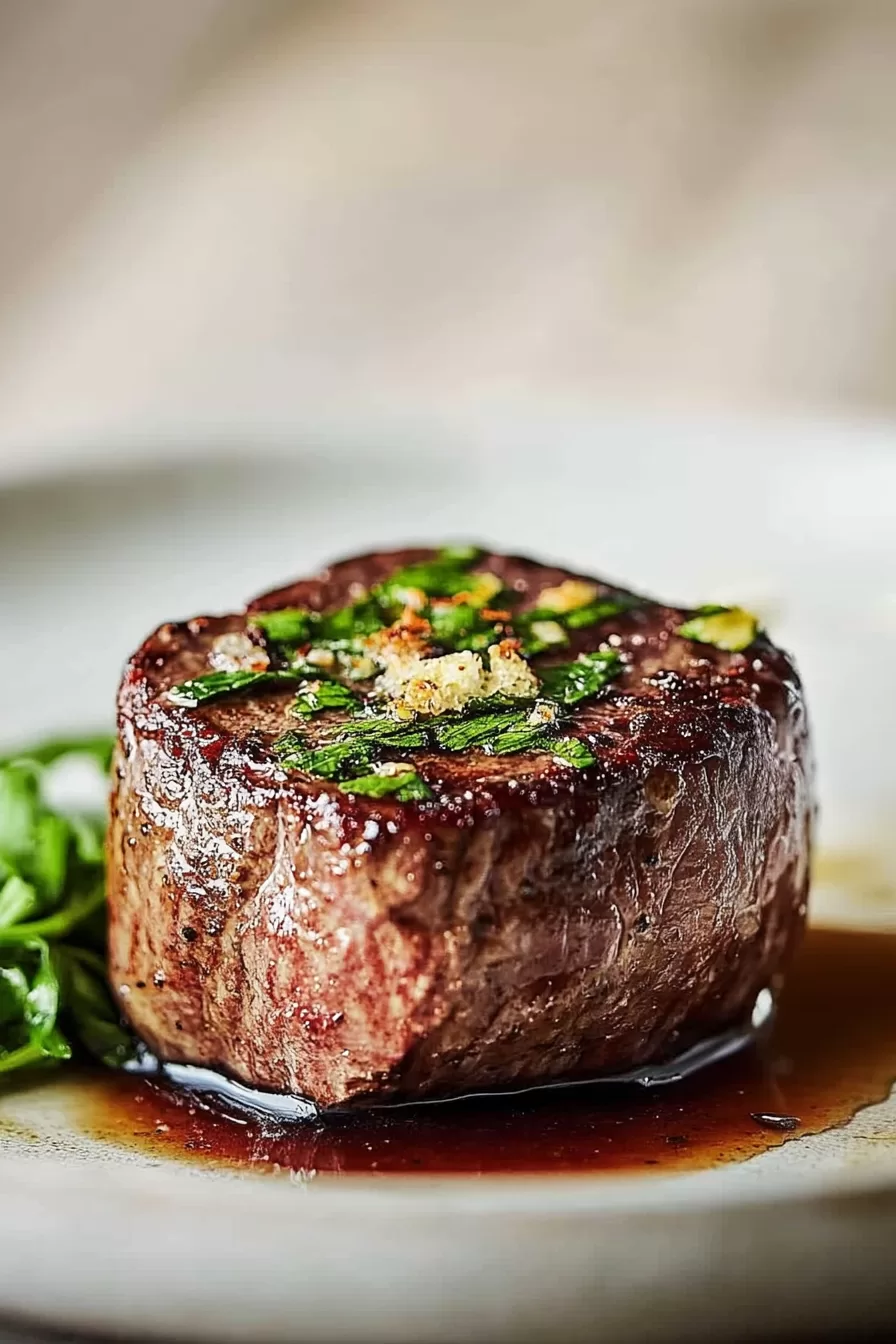

Don’t let this one slip away — pin it now and thank yourself later!
Don’t let this one slip away — pin it now and thank yourself later!
Frequently Asked Questions
What’s the best way to tell when filet mignon is done?
Use an instant-read thermometer. Seriously, guessing is a gamble and filet isn’t exactly budget meat. For rare, aim for 120°F. For medium-rare, it’s 130°F, and for medium, stop at 140°F. Check it right as it comes out of the oven—and keep in mind it’ll rise slightly as it rests.
Can I cook filet mignon without a cast-iron skillet?
Yup! A heavy-duty stainless-steel pan works fine too. Nonstick isn’t ideal since you can’t get that high heat sear you want. Just make sure it’s oven-safe, or transfer the steak to a small baking tray for the final roast step. Flexibility is the spice of life, right?
Should I marinate filet mignon before cooking?
Nope, not needed. Filet is already super tender and flavorful on its own. A marinade could actually make it mushy. Stick to salt, pepper, and that buttery herb situation instead. If you want extra oomph, you can always add a quick sauce after cooking.
Can I freeze leftover filet mignon?
Yes, but be mindful of texture changes. Let the steak cool completely, wrap it tightly in plastic or foil, and pop it in a freezer bag. Use it within 2 months. When reheating, go slow—low heat in a covered pan works better than blasting it in the microwave, unless you like sadness served warm.
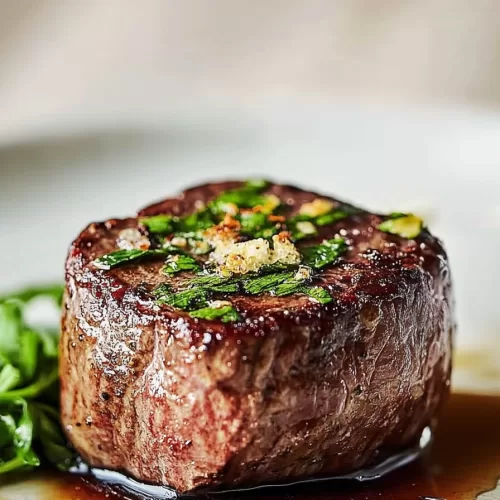
Perfect Filet Mignon with Garlic Herb Butter
Ingredients
Steak & Aromatics
- 2 filet mignon steaks 1.5–2 inches thick, about 6-8 oz each
- 1 tbsp (15 ml) vegetable oil
- 1 tbsp (14 g) unsalted butter plus more for finishing if desired
- 2 garlic cloves smashed
- 2 sprigs fresh thyme or rosemary whole sprigs
- Kosher salt and freshly ground black pepper to taste, for seasoning
Equipment
- Cast iron skillet or heavy stainless steel pan
- Oven
- Tongs
- Instant-read thermometer
Instructions
- Preheat the oven to 400°F (200°C).
- Pat the steaks dry with paper towels. Generously season all sides with salt and pepper, pressing the seasoning into the meat so it adheres.
- Heat your skillet over medium-high heat until very hot. Add the vegetable oil and swirl to coat.
- Sear the steaks: Carefully place the filet mignons in the skillet. Let them sear, undisturbed, for 2–3 minutes to form a golden crust.
- Flip the steaks. Add the butter, smashed garlic, and thyme or rosemary sprigs to the skillet. Tilt the pan and spoon the melted, herby, garlicky butter repeatedly over the steaks for about 1 minute.
- Roast: Transfer the entire skillet to the oven. Roast for 3–5 minutes, until your desired doneness:
120°F for rare, 130°F for medium-rare, 140°F for medium (check with an instant-read thermometer). - Rest: Remove steaks from the skillet to a plate. Tent loosely with foil and let rest for 5–7 minutes before serving.
- Serve: Spoon any remaining butter and garlic from the pan over the steaks. Enjoy with your favorite steak sauce, compound butter, or simply as-is.

